The United Kingdom’s first helicopter air ambulance began in 1987 serving Cornwall, the remote rural southwestern peninsula of England known for the kind of narrow, circuitous roads that are more familiar in Normandy. Able to make use of the direct and unfettered access offered by the sky, the helicopter was a natural solution to get the most seriously unwell casualties to hospital within the “golden hour,” that critical time window said to follow traumatic injuries.
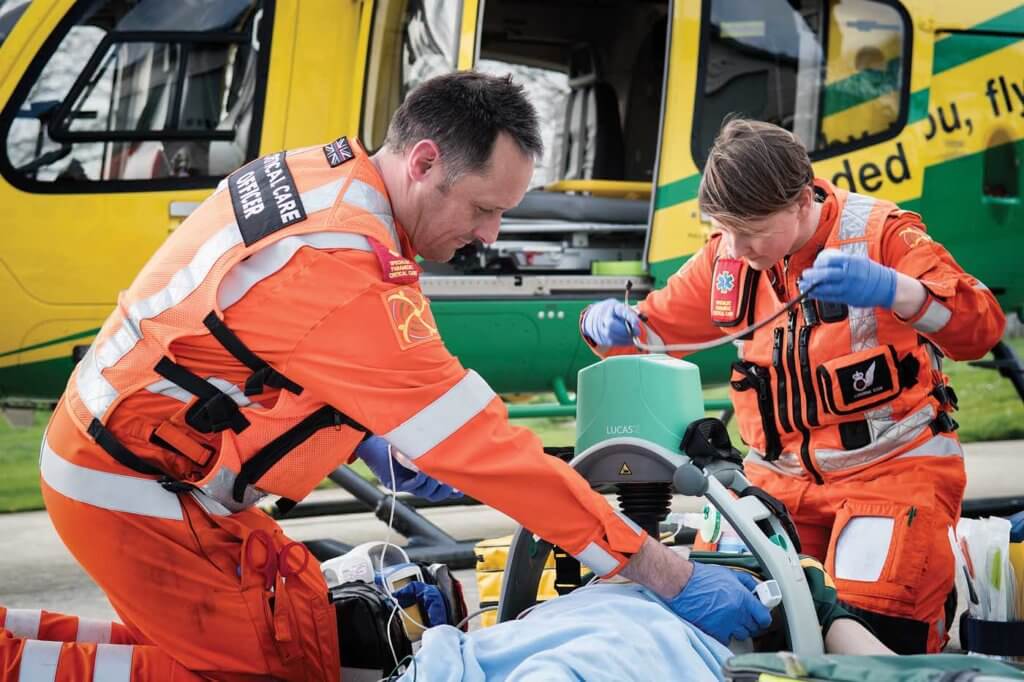
Three years later, Wiltshire was among the first areas of the U.K. to opt for a joint helicopter emergency medical services (HEMS) venture between its police and ambulance services, with the adoption first of an MBB Bo.105 and then an MD Helicopters MD 902. Joint funding left the air ambulance operation liable for around £700,000 per year in operating costs that were met by the Wiltshire Air Ambulance charity, in a model typical of the U.K.
Despite being closely integrated with the U.K.’s publicly funded healthcare providers — the National Health Services (NHS), which covers the costs of providing trained medical crewmembers — the country’s HEMS operators are almost all reliant on private fundraising. This is, in common with much about the NHS, a somewhat controversial subject. Many have suggested that air ambulances should be brought under NHS control and publicly funded, citing potential efficiencies to be gained in doing so.
Detractors of this proposal are quick to point out that the monstrous cost of national HEMS coverage is already being met largely by the public, with far more goodwill than typically accompanies the tax increases that might otherwise be necessary. Alongside this are the benefits of “ownership” — there is a strong sense among local communities that they contribute to their own helicopter, and take great pride that they can maintain such an asset.
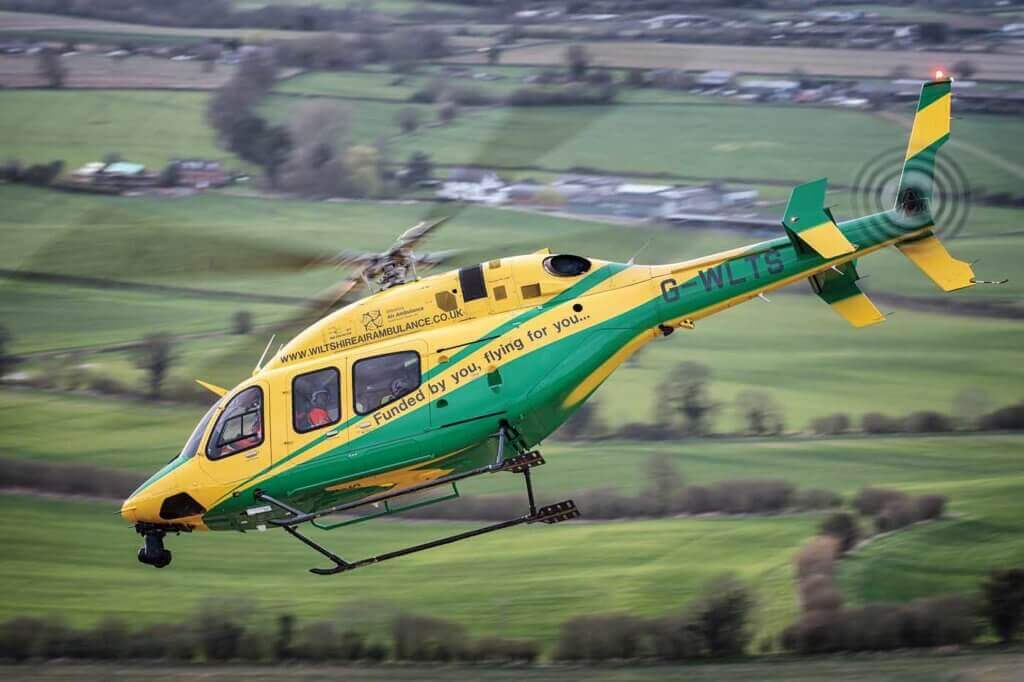
That pride of ownership is evident in Wiltshire. At the end of 2014, police operations in Wiltshire were absorbed by the expanding National Police Air Service, meaning that the charity would now be on its own. This presented a multitude of problems including basing — the program has been accommodated at police headquarters, in an arrangement that will expire at the end of this year — but by far and away the most pressing issue was the lack of an aircraft.
Thanks to an outpouring of public support, Wiltshire Air Ambulance was able to lease, and later purchase, a brand-new Bell 429, as well as sustain the £3.25 million (about US$4.1 million) in annual operating costs associated with its new dedicated air ambulance. Even more generous donations have allowed it to commence construction on a new £5.1 million (US$6.5 million)airbase in Semington, as it continues to deliver a cutting-edge service that remains free at the point of use.
New Capabilities
In selecting the Bell 429 over competing offerings such as the Leonardo AW169 and Airbus H135, Wiltshire Air Ambulance became the first U.K. operator of the Bell 429 in the HEMS role. According to chief pilot George Lawrence, the aircraft is more or less the perfect size for the role, with a notable power advantage over the MD 902 that the program operated previously.
“In that aircraft, we started to limit our endurance above 25 C,” he said, “but with the 429, we now have greater overall endurance and it’s not limited until we reach around 35 C.” This additional power reserve also gives a real safety advantage when approaching or departing confined landing areas.
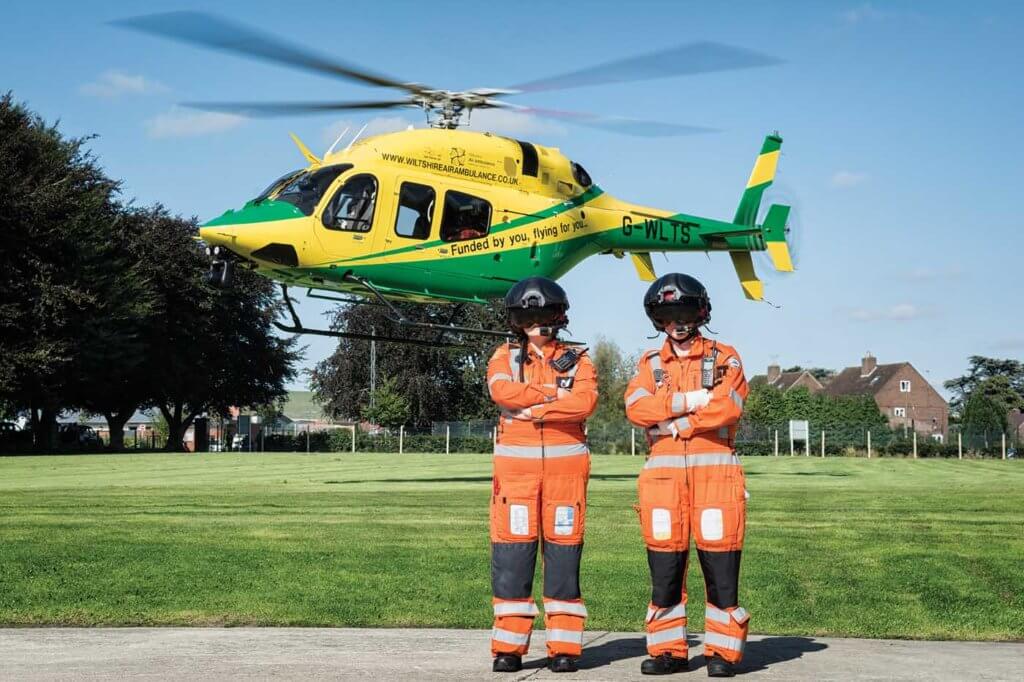
The fitting of the Aerolite medical interior guarantees that medics have head-to-toe access to the casualty from their own crashworthy seat, should they require. It also allows easy loading of the casualty litter from the starboard side cargo door, which saves the weight associated with the optional rear clamshell doors. There is adequate cabin space and seating for two paramedics and the casualty litter, plus an additional seat for use if the casualty needs to be accompanied, for example by a family member.
The usual crew composition is one pilot and two paramedics, with day-to-day running of the operations room — and the critical task of making the tea — shared between all members on shift. While some HEMS pilots in the U.K. are fully civilian-trained, they are more likely to be drawn from ex-military stock, and this is the case for all five duty pilots at Wiltshire.
One of them Matt Wilcock, is an ex-Army Apache pilot. As a former test pilot with over 30 types in his logbook, he might have had his pick of jobs, but HEMS flying suits him perfectly. “It’s very reactive and very varied,” he said. With half an eye on his listening colleagues, he added, “We also occasionally have to get involved with the medical side… you know, fetch this, carry that.” There were chuckles, but the closeness of the crews was tangible; familial even.
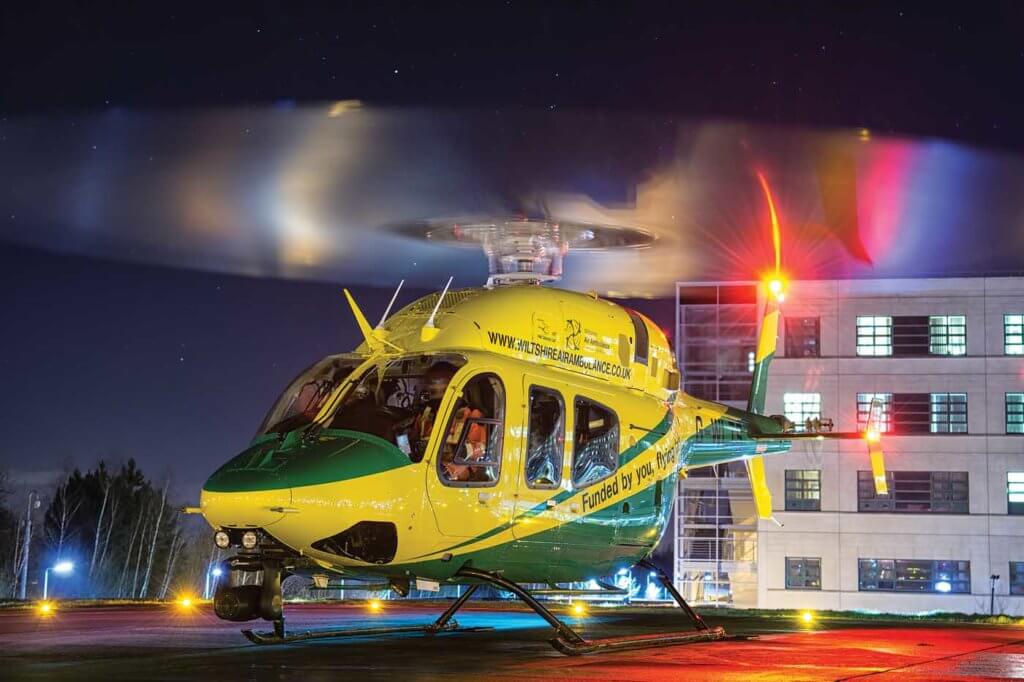
While they were joking, operations manager Kevin Reed explained the importance of crewmembers understanding each other’s working environment. “We treat the paramedics as full aircrew members, with the same access to human factors training and the same fatigue limits,” he said. “We are ahead of a lot of other units in that sense. It means we need more paramedics, but with aircraft operation involved we want to be as safe as we can.”
Nowhere is that attitude more important than during night operations. Wiltshire is among the first air ambulance units in the U.K. to operate at night to ad-hoc landing sites using night vision goggles (NVGs). Although the program is not able to resource 24-hour operation, this now means it is capable of operating until the early hours of the morning, massively increasing the availability of rapidly delivered critical care.
The Leading Edge of Life Saving
The responsibility of delivering that care falls squarely on the shoulders of the air ambulance critical care paramedics (CCPs). Employed by the NHS, they are selected from a cadre of paramedics that staff the country’s land-based ambulances, and with air ambulance work seen as the pinnacle of their trade, competition is utterly fearsome. (One CCP remarked that former friends had stopped speaking to him after hearing of his successful application to Wiltshire.)
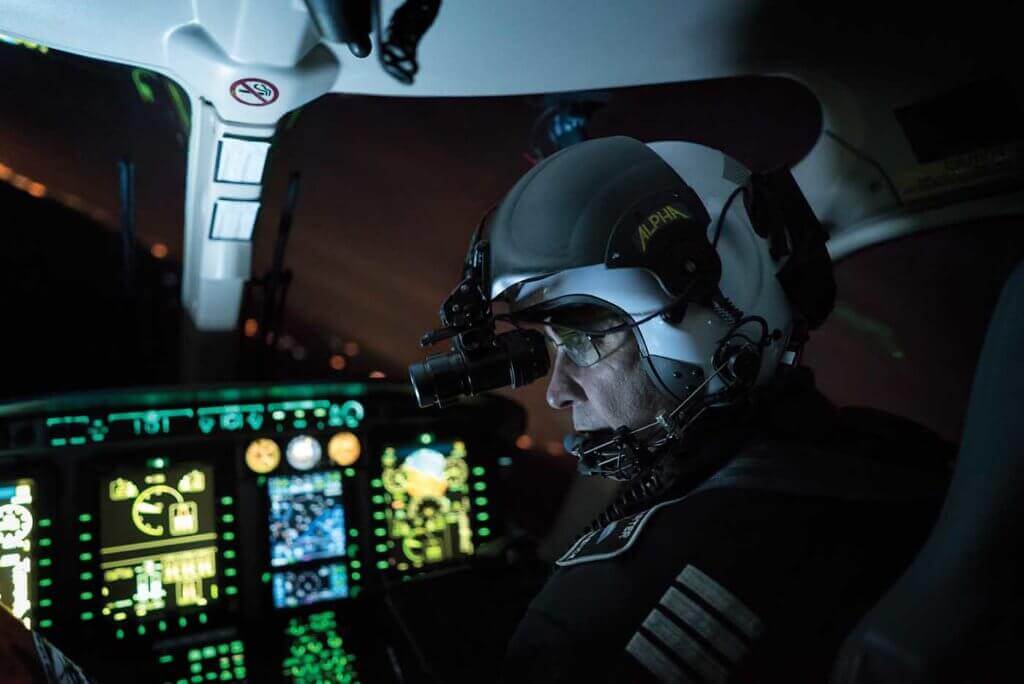
Their level of training is also formidable, and despite the program’s undoubtedly advanced technology — such as the Lucas automatic chest compression machine, which delivers automated CPR and looks like a prop from the film Blade Runner — it is from these individuals that the real capability of the air ambulance is delivered.
Mark Kinsella is a trainee CCP on secondment with the air ambulance who came to the program following duty on South West Ambulance Service Hazardous Area Response Team: paramedics with advanced clinical training who respond in dangerous environments like those underground, at height, or around hazardous chemicals. Even that, he said, did not prepare him for the unforgiving tempo he experiences with Wiltshire Air Ambulance. “On the trucks [land ambulances] you might see one major trauma a year,” he said.
“We probably see about one a day.”
Thirty years after the first air ambulance served Cornwall’s remote communities, and with three dozen similar services now operating across the country, there is still a sense of heightened drama when one of these aircraft arrives at the scene of a medical emergency — for good reason.

The U.K.’s helicopter emergency medical services programs have become far more than just flying ambulances. With highly trained medical professionals and an ever-increasing suite of equipment on board, they now transport elements of an operating theater to the incident scene. With the aim of immediate casualty stabilization, air ambulances are now providing services that were previously available only in hospitals.
And that capability is in constant demand. On the day that Vertical 911 visited, the crew had climbed into their aircraft at 8:30 that morning and by mid-afternoon had spent only about 30 minutes on the ground at base. Rarely do you find teams of people that not only perform well at such a tempo, but seem to revel in it. It’s easy to understand why the people of Wiltshire see their air ambulance program as a worthy investment.





